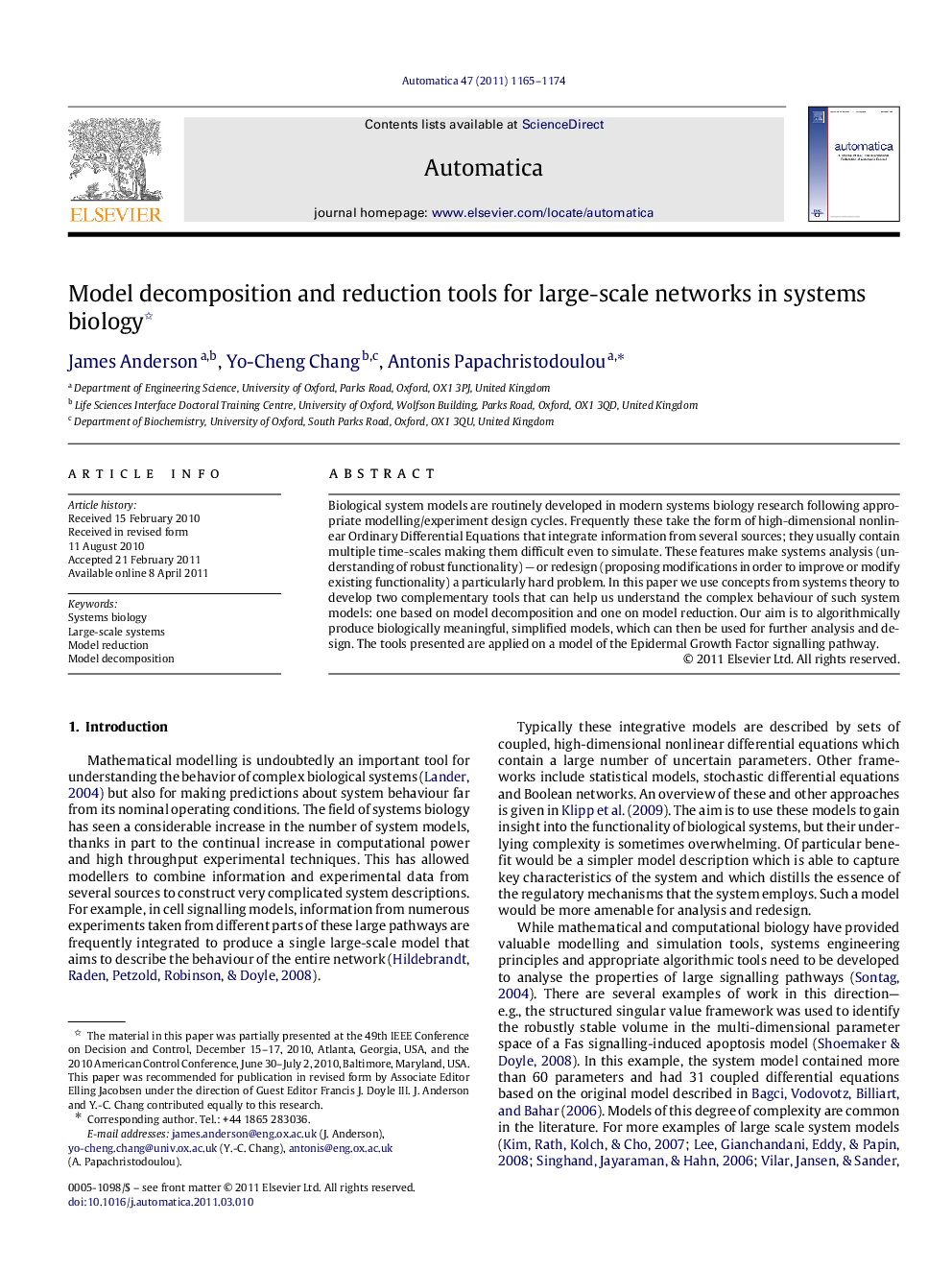| Article ID | Journal | Published Year | Pages | File Type |
|---|---|---|---|---|
| 696271 | Automatica | 2011 | 10 Pages |
Biological system models are routinely developed in modern systems biology research following appropriate modelling/experiment design cycles. Frequently these take the form of high-dimensional nonlinear Ordinary Differential Equations that integrate information from several sources; they usually contain multiple time-scales making them difficult even to simulate. These features make systems analysis (understanding of robust functionality) — or redesign (proposing modifications in order to improve or modify existing functionality) a particularly hard problem. In this paper we use concepts from systems theory to develop two complementary tools that can help us understand the complex behaviour of such system models: one based on model decomposition and one on model reduction. Our aim is to algorithmically produce biologically meaningful, simplified models, which can then be used for further analysis and design. The tools presented are applied on a model of the Epidermal Growth Factor signalling pathway.
